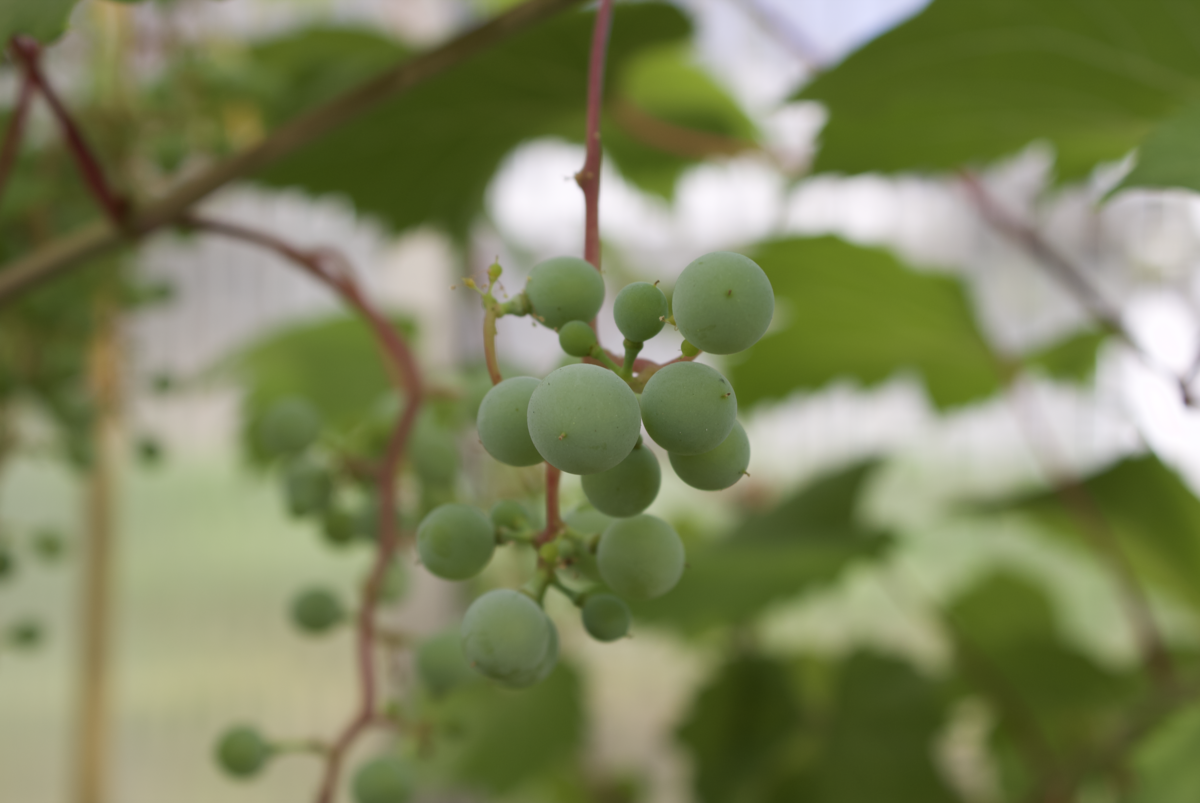By: Dr. Karina Gallardo and Kate Fessler
Genetic modification of food crops has been a hotly debated issue for the last several decades. Although there are very few genetically modified horticultural crops on the market, there is still concern expressed by some consumers about what genetic modification of plants entails. While the VitisGen projects have never genetically modified grapes for release to the public, our socioeconomic team for VitisGen2 were interested in whether consumers were willing to purchase gene-edited grapes.
One of the most important things to talk about before diving into their findings is the difference between genetically modified, genetically engineered, and gene-edited. Humans have been modifying plants for thousands of years using traditional breeding, and this selection of plants with beneficial traits has drastically changed many plants over time. However, conventional breeding does not directly manipulate the plant’s genome. Therefore, genetic modification in crops usually refers to the direct introduction of new genetic material that may have originated from a different species or organism. Interestingly, this kind of direct transfer does occur on its own in nature, where it is called “lateral gene transfer.” It is most common in single-celled organisms but also occurs in plants and small animals.
“Genetically engineered” is often used interchangeably with “genetically modified”, but usually refers to achieving a specific effect through making one type of targeted change to a plant or other organism. In fact, when genetic engineering happens through gene editing, it is usually a relatively small change to a gene that stimulates an important response in a plant, like producing greater volumes of a nutritious compound, or becoming more resilient to drought conditions. One common method of gene editing is CRISPR/Cas9.
Economists on the VitisGen team conducted a literature review that found the public might not be as averse to narrow gene editing methods such as CRISPR as to broader genetic modification. Although US scientists and VitisGen3 scientists do not intend to apply CRISPR to improve table grape varieties at this time, it is still valuable to know how the public might react if presented with a CRISPR table grape. During VitisGen2, the traits economics team therefore conducted two studies to investigate the topic.
The first study estimated consumers’ willingness to pay for selected quality attributes of table grape cultivars that were developed using either conventional breeding or gene editing (CRISPR-Cas9). These attributes included sweetness, crispness, uniform skin color, flavor, and grape size. Consumers’ willingness to pay for each of these attributes were ranked for the grapes from both types of breeding technologies. Results showed that the rankings for these attributes did not differ substantially between the two types of breeding. While there was a slight discount in overall willingness to pay for table grapes produced using CRISPR, which would usually indicate consumers are willing to pay more for grapes developed using conventional breeding, the discount was neither economically nor statistically significant.
Interestingly, the factors that consumers were most willing to pay a premium for were the experiences they had while actually eating the grapes. This means that consumers stated the highest willingness to pay for sweetness and crispness rather than for external appearance attributes such as skin color and size.
The second study corroborated the first by focusing on estimating consumers’ willingness to pay for attributes that impact eating quality (taste, texture, and appearance), but also focused on production methods. Production methods included expected number of chemical applications as well as breeding technology (CRISPR and conventional breeding). On average, survey respondents were willing to pay the highest premiums for taste and texture, followed by external appearance and the expected number of chemical applications. Considering the breeding methods, on average, our respondents were willing to pay a small premium for table grapes developed using conventional breeding rather than CRISPR.
It is important to know, however, that in both studies the responses to preferences about breeding methods were different across various groups. For instance, the trait economics team identified a group of respondents that would actually be willing to pay more for grapes developed using CRISPR! This group self-reported that they had a high level of knowledge about genetic engineering and CRISPR, and were most likely to consider gene editing to be safe and natural.
Overall, both studies indicate that CRISPR may face some barriers among consumers. However, given the future challenges of an ever-evolving climate and regulatory environment, the plant-breeding community may soon have an opportunity to use new technology for developing cultivar traits that will help provide improved fruit quality for consumers and improved production traits for growers.
